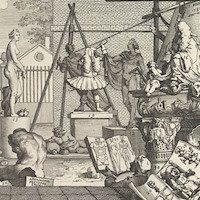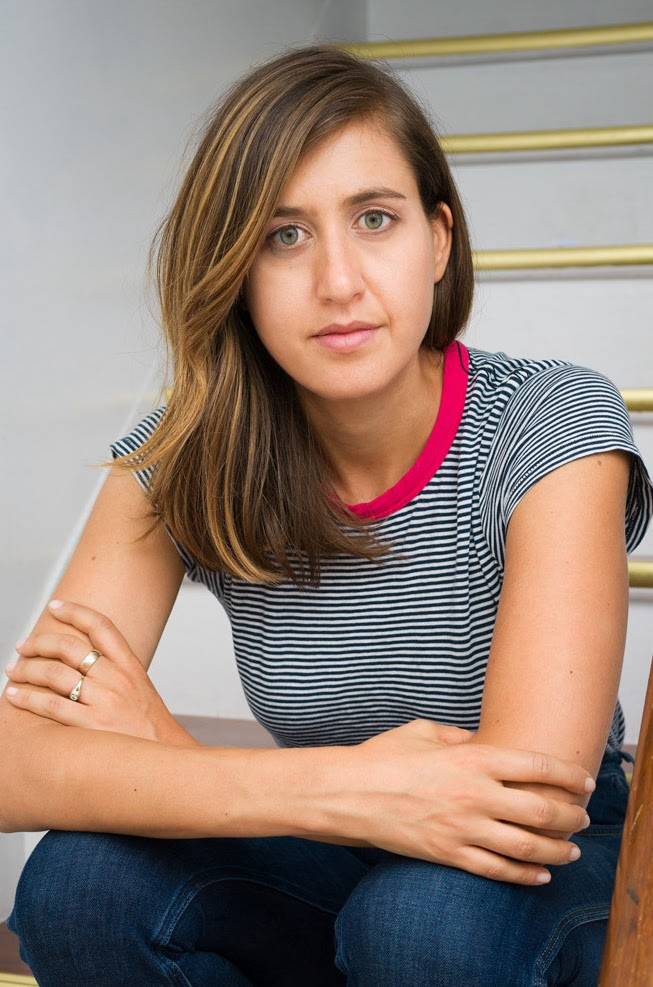The New York Comics & Picture-Story Symposium is a weekly forum for discussing the tradition and future of text/image work. Open to the public, it meets Tuesday nights 7-9 p.m. EST in New York City. Presentations vary weekly and include everything from historical topics and technical demonstrations to creators presenting their work. Check out upcoming meetings here.
The 109th meeting of the NY Comics & Picture-Story Symposium was held on Tuesday, November 25, 2014. Literary critic Abigail Zitin presented a lecture on William Hogarth’s The Analysis of Beauty. This essay is based on her remarks.
***
He was one of the great satirists, an accomplished craftsman, and, tellingly, the son of a failed academic, but he found time to write a treatise about beauty that applies to how we think of graphic novels two centuries later. 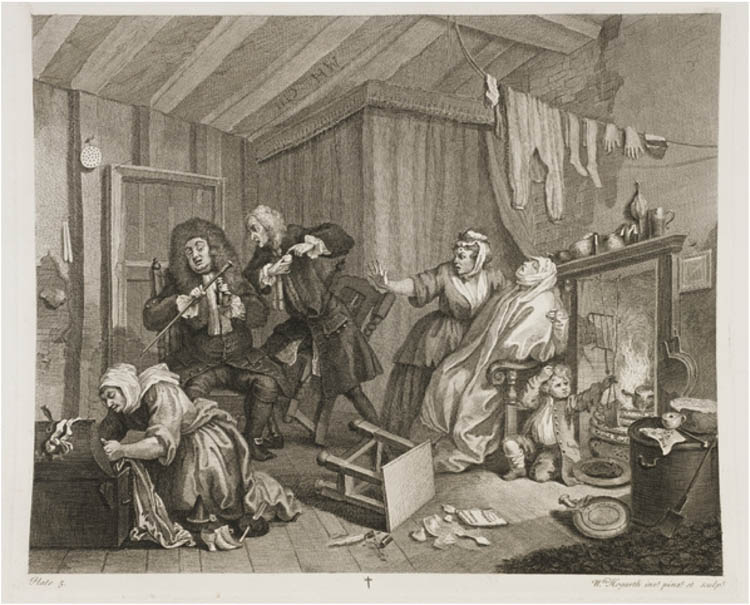 William Hogarth (1697—1764) has also become the subject of fascination for Assistant Professor of English at Rutgers University Abigail Zitin in a particularly unlikely way.
William Hogarth (1697—1764) has also become the subject of fascination for Assistant Professor of English at Rutgers University Abigail Zitin in a particularly unlikely way.
Hogarth’s graphic series—most famously, The Harlot’s Progress, The Rake’s Progress, and Marriage à la Mode—are now routinely recognized as predecessors of our modern graphic novels. But literary critic Zitin’s studies concentrate on Hogarth’s role as aesthetic theorist through a lesser-known work, The Analysis of Beauty, published in 1753, about twenty years after his rise to public acclaim. Zitin began her Symposium discussion by recognizing the two “sides” to appreciating Hogarth’s graphic work: the narrative side, of things that would be of interest to someone studying literature, and the pictorial side, appreciating the art. Upon first reading, The Analysis of Beauty suggests that Hogarth’s account of the visual is more important than the verbal—that he values the primacy of visual content over the literary content of graphic literature.
Ziting insists, though, that there is beauty to the literary side of Hogarth’s work as well as in the art, and that the interplay between pure visual appreciation on the one hand, and pure narrative theory on the other, has certainly shaped Hogarth’s critical reception over the 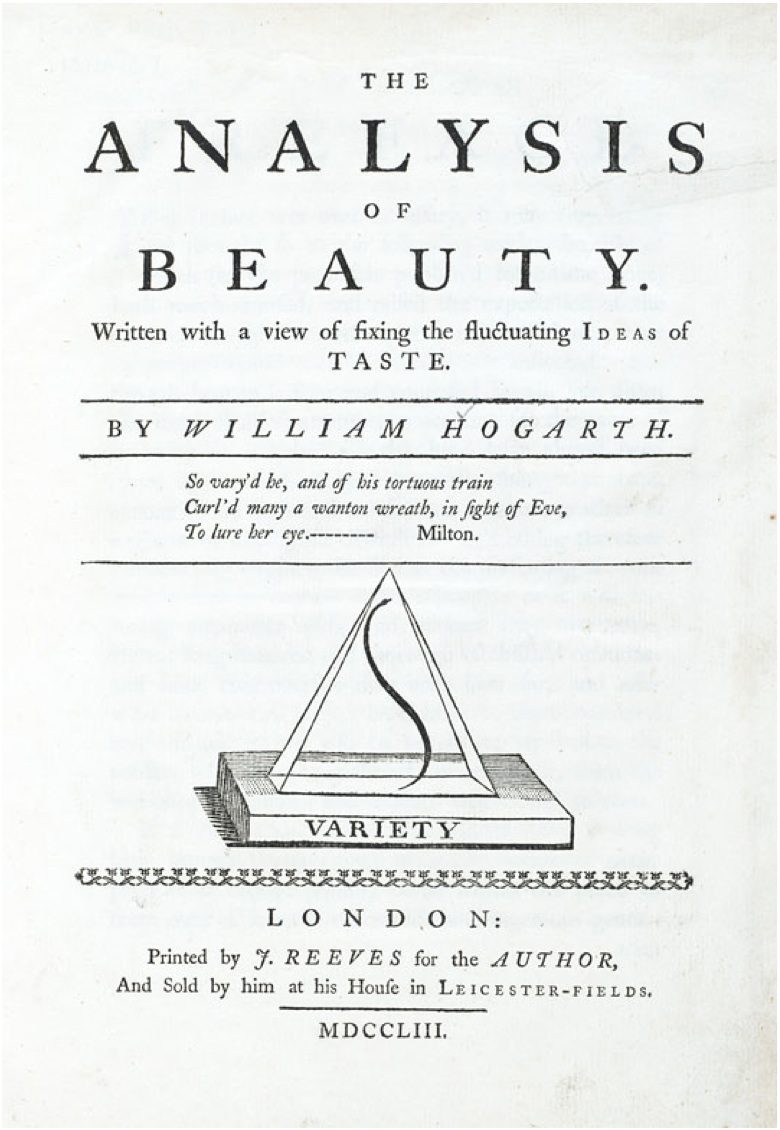 centuries. First, he has a special sensitivity to language as a medium, despite his stated anxiety that he’s not a writer, but rather an artist working “out of his sphere.” But more vital to our discussion, in his Anecdotes of Painting in England (1771), the British critic Horace Walpole praises Hogarth as being “in a class by himself,” and a “great and original genius,” considering him a “writer of comedy with a pencil, rather than as a painter.” (It was stylish in the 18th century to refer to creative media by their implements: writers take as their emblem the “pen,” visual artists, “the pencil.”) Walpole’s statement is very welcome to us contemporary readers. For a long time, this characterization as a “literary artist” left Hogarth in a gray area for those who’ve wanted to study him, somewhere between the disciplines of art history and literary criticism (the downside, Zitin notes, of being in a class by one’s self). But a sea change has taken place in contemporary artistic and literary studies recently, and Hogarth’s contextually dense images and narrative series have become exemplary objects for critical interpretation of graphic novels. It is a celebrated result for every comics reader who for so many years valued cartoonists’ work both for its literary and its visual components.
centuries. First, he has a special sensitivity to language as a medium, despite his stated anxiety that he’s not a writer, but rather an artist working “out of his sphere.” But more vital to our discussion, in his Anecdotes of Painting in England (1771), the British critic Horace Walpole praises Hogarth as being “in a class by himself,” and a “great and original genius,” considering him a “writer of comedy with a pencil, rather than as a painter.” (It was stylish in the 18th century to refer to creative media by their implements: writers take as their emblem the “pen,” visual artists, “the pencil.”) Walpole’s statement is very welcome to us contemporary readers. For a long time, this characterization as a “literary artist” left Hogarth in a gray area for those who’ve wanted to study him, somewhere between the disciplines of art history and literary criticism (the downside, Zitin notes, of being in a class by one’s self). But a sea change has taken place in contemporary artistic and literary studies recently, and Hogarth’s contextually dense images and narrative series have become exemplary objects for critical interpretation of graphic novels. It is a celebrated result for every comics reader who for so many years valued cartoonists’ work both for its literary and its visual components.
Does The Analysis of Beauty have any prescription to narrative beauty as well as to pictorial? Yes. Writing, Hogarth argues, keeps the eye moving, thereby sustaining the pleasure of looking. His most detailed account of literary pleasure involves following a text, or, in his words, “reading [an] unfolding narrative.” He writes that, “[e]very arising difficulty that for a while attends and interrupts [one’s] pursuit, gives a sort of spring to the mind, enhances the pleasure, and makes what would else be toil and labour, become sport and recreation.” Hogarth stresses the idea that pursuit is a bounty in itself, even if it is the means to other, more practical ends. 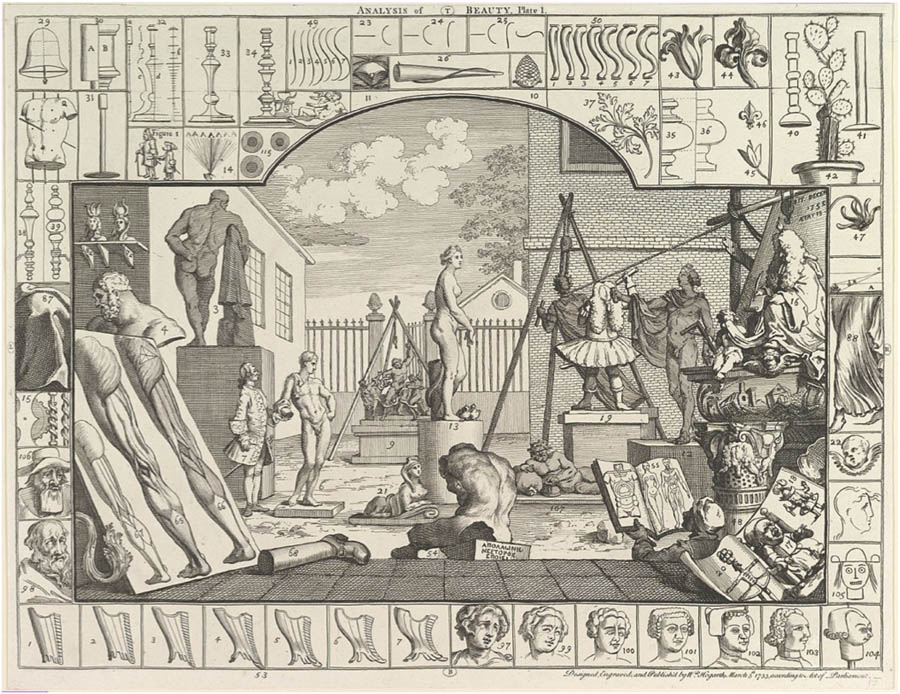 “How joyless does the sportsman return” he writes, “when the hare has not had fair play? ”
“How joyless does the sportsman return” he writes, “when the hare has not had fair play? ”
One characteristic of literary pursuit is its end-directedness. Narrative pleasure expects the fulfilment of an ending. In Hogarth’s own words,”the pleasure of seeing material forms slows down and, perhaps, heightens the pleasure of suspense and its resolution.” The pleasure of beauty involves joyful “self-abandon in a wanton chase,” and Hogarth seems to think that literature can represent beauty—though he stops short of deeming words or the works they compose as themselves beautiful. Ultimately, Hogarth’s scholarship has benefitted tremendously from the cultural turn in literary studies which embraced the idea that images are amenable to close reading, and that literary theorist Thierry Smolderen begins his book on the history of comics with, the observation that we now understand drawing “as if it were a form of writing.”
It seems odd that Hogarth should have written a book like The Analysis of Beauty, with its academic and intellectual bent, having spent his life chronicling the lower orders of society and concentrated his efforts to popular entertainment. The Harlot’s Progress and The Rakes Progress parody John Bunyan’s hugely popular allegory A Pilgrim’s Progress (1678)—in Hogarth’s case, though, the harlot and the rake “progress,” respectively, toward venereal disease and death, financial ruin, and madness. They’re all characters, rather than personifications.
But Hogarth positions himself squarely against elitism. Zitin calls The Analysis of Beauty “a retort by a practitioner to the idle tastemakers who think they understand how art works.” Hogarth’s experience as a tradesman, he insists, gives him better chops for explaining beauty than those self-appointed experts he disparages as “mere men of letters,”and that he, a master craftsman, was better 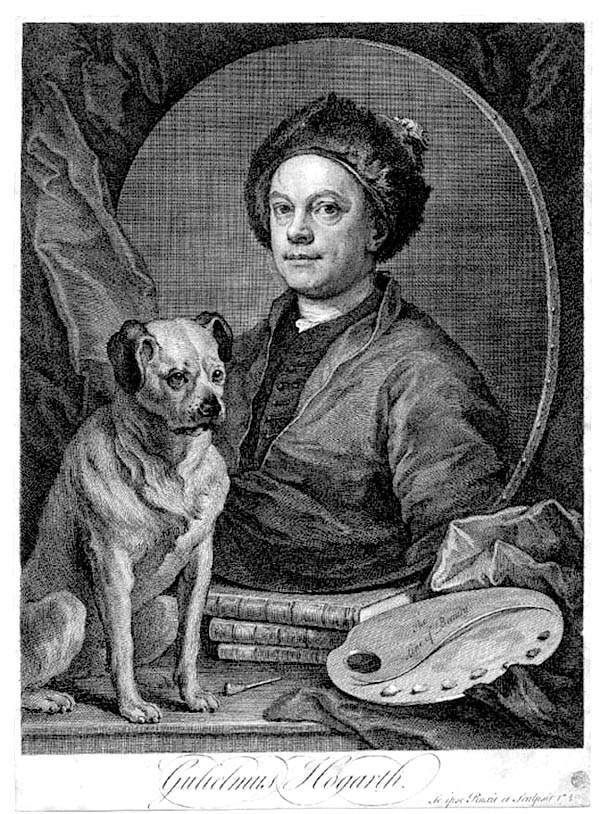 qualified to define what beauty is than any some pompous intellectual who would have no knowledge of the way art is made in the first place. He is the craftsman who began his career with apprenticeship and worked his way up to mastery, rather than some “highbrow.” (For the record, his six “fundamental principles” of visually pleasing forms are fitness, variety, uniformity, simplicity, intricacy, and quantity.) Recall Walpole’s epigram about writing with a pencil, and Hogarth’s confession that he’s uncomfortable with the pen he’s just picked up, but it’s those “mere men of letters,” the literati and intellectuals, who have actually overstepped their bounds in analyzing graphic narrative. Wittily, he claims, beauty is beyond the reach of mere men of letters because what they should be reaching for, but don’t know how to wield, is a pencil.
qualified to define what beauty is than any some pompous intellectual who would have no knowledge of the way art is made in the first place. He is the craftsman who began his career with apprenticeship and worked his way up to mastery, rather than some “highbrow.” (For the record, his six “fundamental principles” of visually pleasing forms are fitness, variety, uniformity, simplicity, intricacy, and quantity.) Recall Walpole’s epigram about writing with a pencil, and Hogarth’s confession that he’s uncomfortable with the pen he’s just picked up, but it’s those “mere men of letters,” the literati and intellectuals, who have actually overstepped their bounds in analyzing graphic narrative. Wittily, he claims, beauty is beyond the reach of mere men of letters because what they should be reaching for, but don’t know how to wield, is a pencil.
Still, Hogarth owns up to his insecurity in one interesting disclaimer. He confesses to have given up on hiring a ghostwriter for The Analysis of Beauty because of “the difficulty of one man’s expressing the ideas of another,”and he “was therefore reduced to the attempt of finding words of his own.”
***
Image credits:
Image 1: Page from A Rake’s Progress
Image 2: Title plate, An Analysis of Beauty
Image 3: Page from An Analysis of Beauty
Image 4: Hogarth, Self-Portrait
All copyrights are assumed to be in the public domain.
***
Abigail Zitin is Assistant Professor of English at Rutgers University in New Brunswick, NJ and the 2014–15 Carol G. Lederer Postdoctoral Fellow at the Pembroke Center for Teaching and Research on Women at Brown University. She studies aesthetics, visual culture, and literary criticism in eighteenth-century Britain; her research focuses on Hogarth’s Analysis of Beauty and the history of formalism. A recent essay on Hogarth’s aesthetics appeared in Eighteenth-Century Studies; another is forthcoming in ELH.
***
About the author: Mark Lerer holds a bachelor’s degree from Princeton University and an M.F.A. from the New York Academy of Art. His cartoon drawings have been published in the New York Post, have appeared at New Century Artists and Nexus galleries, and are regularly featured on Facebook.
